Types of Cameras
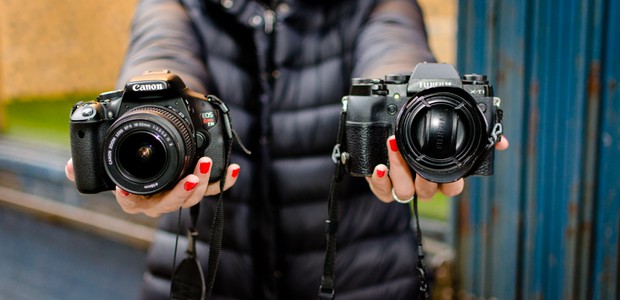
DSLRs and mirrorless and compacts—oh, my! Don't worry, in this article we will help you find your way to a better understanding of the three different types of cameras available on the market today. We'll give you a brief explanation of each type of digital camera, as well as pros and cons to each kind. Soon you'll feel like a real wizard when it comes to cameras...
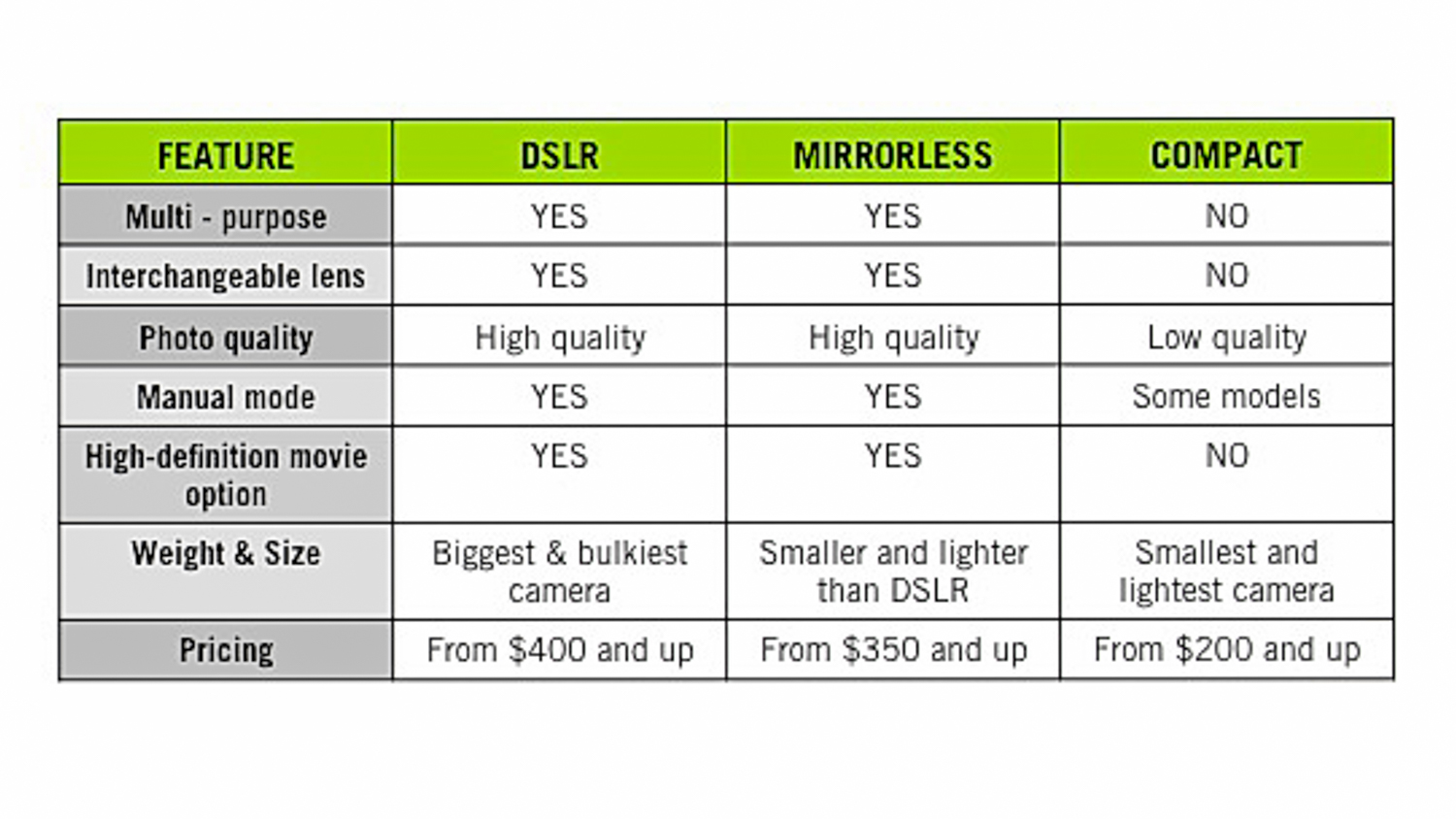
1. DSLR
This is probably the digital camera you picture in your head when you think of a digital camera. Overall, they are extremely versatile and perform well in almost all situations.
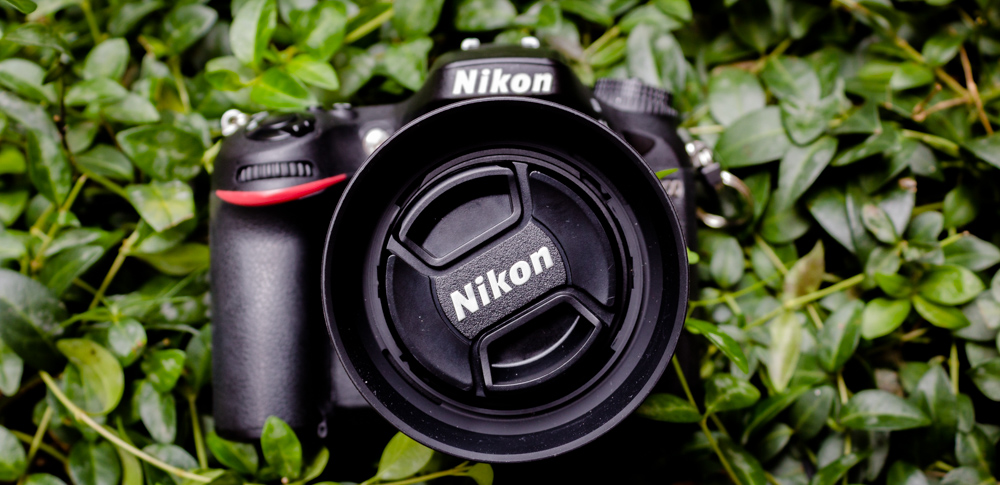
Pros:
- A DSLR consists of a body—the part of the camera that records the image—and a removable lens. This ability to change lenses on a DSLR gives you lots of flexibility.
- DSLRs are designed to let you see the image exactly as the camera itself will record. The photos are high quality and will reproduce well when printed, even at large sizes (e.g. 11x17”).
- DSLRs tend to be very responsive—there is no lag time between when you snap your picture and when the image is recorded, so you'll never miss a moment.
- There are tons of lenses available for most brands of DSLR cameras (a whole other discussion!). This gives you lots of creative options.
- All DSLRs will give you full control, and most give you some pre-programmed automatic or semi-automatic modes.
- Some DSLR models also have video capability, allowing you to capture beautiful high-definition movies.
Cons:
- Of all the types of digital cameras, these are the biggest and bulkiest.
- They tend to be among the heaviest, especially when you include your lens or lenses.
Entry-level DSLRs are usually sold packaged with a lens and cost between $400 and $600. High-end DSLRs retail for $1500 and up (and are often sold without a lens).
2. Mirrorless
A newer type of digital camera that is continually growing in popularity is the mirrorless system. A mirrorless camera usually gives you all the same capabilities and features as a DSLR, but in a slightly smaller package.They are very quiet—there is no loud “click-click!” when you snap a photo. This makes them popular with street photographers, who want to remain silent and invisible to their subjects in order to capture candid scenes.
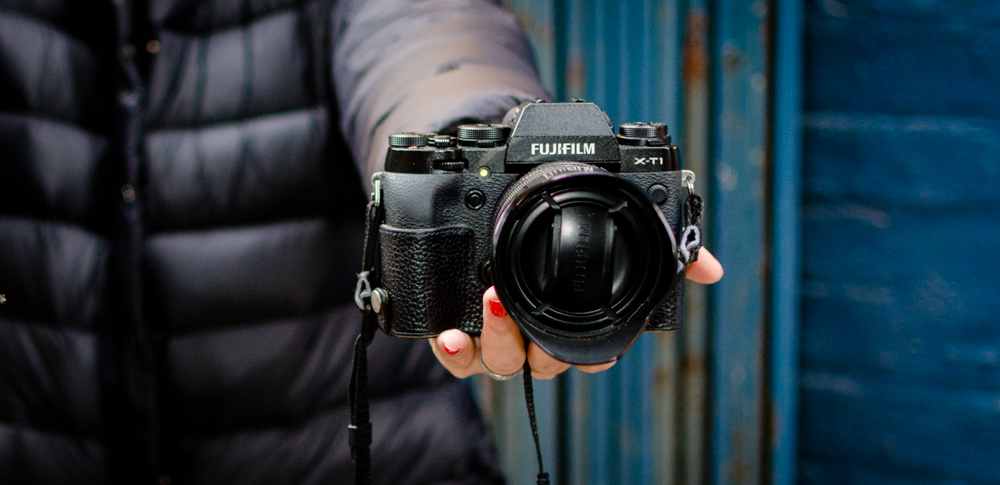
Pros:
- They are smaller and lighter than DSLRs—this also makes them less conspicuous.
- You will still have manual control over all your settings, as well as some automatic or semi-automatic modes.
- There is no loss of image quality when compared to a DSLR.
- Some mirrorless cameras also include high-resolution video options, as well.
Cons:
- Some mirrorless models won't let you swap lenses! Many mirrorless systems do have interchangeable lenses. Even so, keep in mind that there are fewer lenses available for mirrorless cameras (for now, anyway—as demand for these cameras increases, so will your choices).
- Some mirrorless cameras don't have a viewfinder—you must rely on the rear LCD screen to compose your photos. This can be tricky in brightly-lit situations, when there is a lot of glare on your screen.
- Some photographers report a slight lag between what you see on your LCD screen and what is actually in front of the lens.
- There is also the possibility of a slight delay between the second when you press the button to take a photo, and when the photo is actually recorded.
- Depending on the model, automatic focus modes are not always as precise as in DSLRs.
Mirrorless cameras vary greatly in price, from as little as $350 to as much as $2000, depending on the brand, model, and whether or not a lens is included.
3. Compact
Compact cameras are our final category, and they are just that—small and compact! They may also be called “point-and-shoot” cameras. Be warned—there are a million compact camera choices, and it can be difficult to distinguish which will offer you the quality you desire.
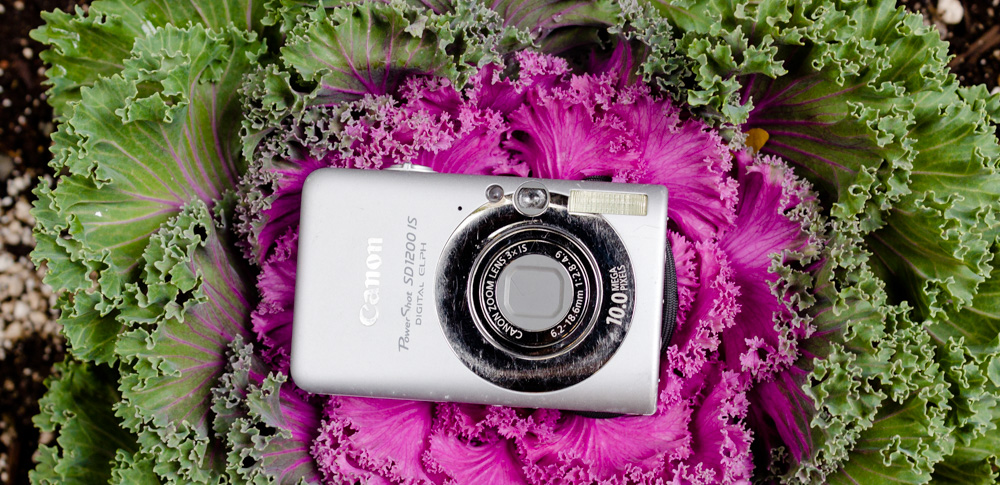
Pros:
- Compacts are smallest, lightest type of camera out there. Easy to slip into your pocket or purse, and the most lightweight, these cameras are great for people on-the-go, who want to capture snapshots of daily life, parties, or vacation adventures, without being weighed down by a bulky camera bag.
Cons:
- Compact cameras tend to sacrifice some functionality and features in favor of their compact design, although there are some models available that will perform nearly as well as a DSLR or mirrorless camera.
- The main difference between compact and other cameras is that image quality will usually be reduced, so you may not be able to print your photos at larger sizes.
- Depending on how advanced the model is or isn't, a compact camera may not offer you as much control over your settings—it may come only with pre-programmed, fully-automatic modes. If you don't want to be bothered with learning how to control all the features of your camera, then this could be a good thing—but if you want to get more creative and consistent results, then it is better to look for a camera with manual control.
- You cannot change lenses—compact cameras almost always have only one lens that is built into the camera (but most compacts will let you zoom in and out, at least a little).
Compact cameras are declining in popularity, since many people use the cameras in their smartphones instead. This is something to consider—if you buy a compact camera, will it be redundant if you already use your smartphone to photograph while on-the-go?
There is a large variety of compact cameras, price-wise. However, most fall within the range of $200 to $500. If you value small size and affordability above all else, and don't mind potentially losing some control of your settings, this may be the right choice for you.
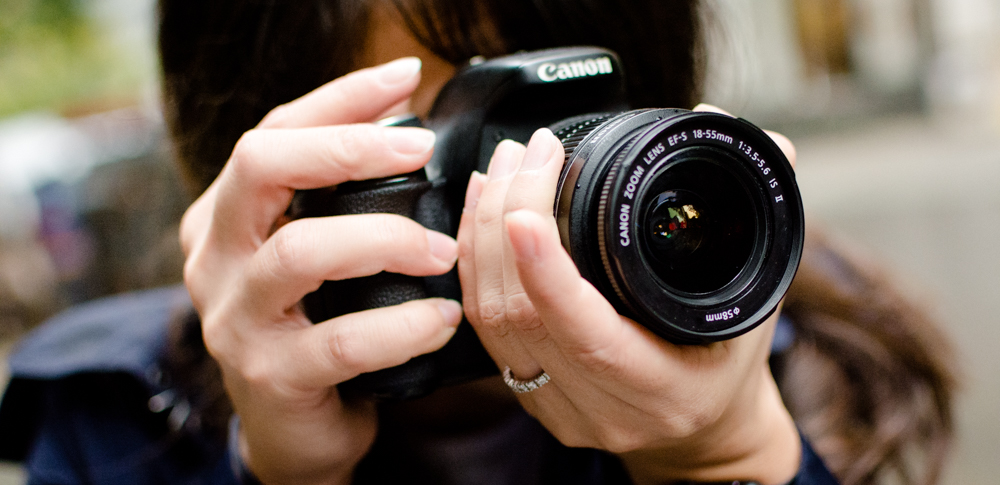
Hopefully you're feeling a little more informed about the types of digital cameras. Now, all you'll have to do is learn to operate your new camera with a “click!” here at PhotoUno!
If you need more information, check out our article: 5 Tips on Buying a Digital Camera. Also, here are some good store recommendations to buy camera and more : B&H and Adorama.
Comments
Sign in to comment.